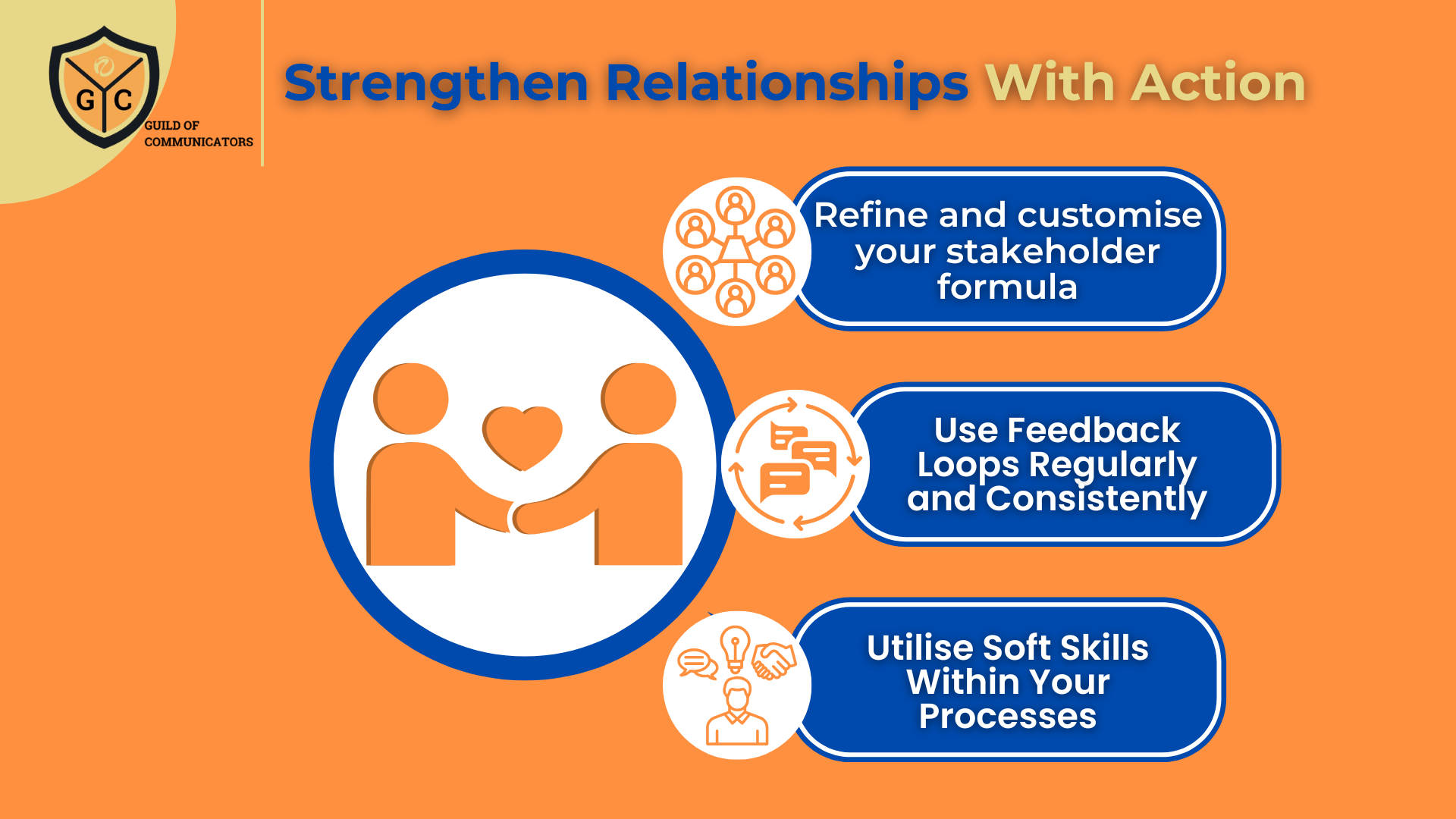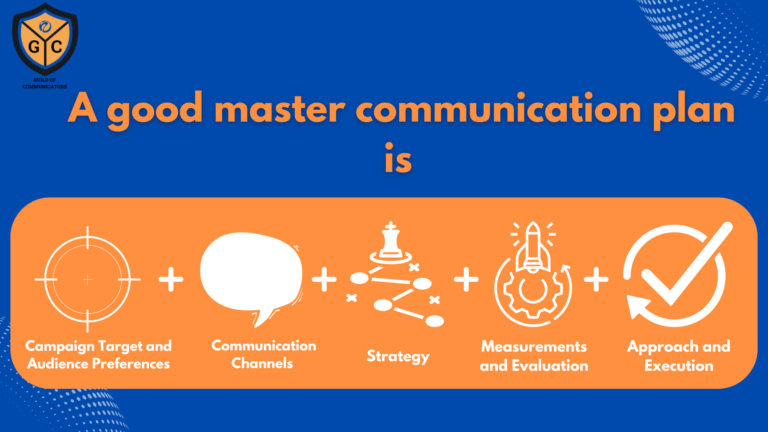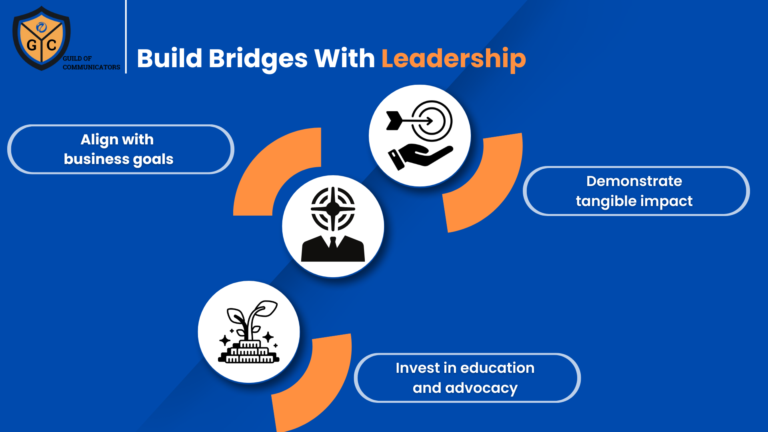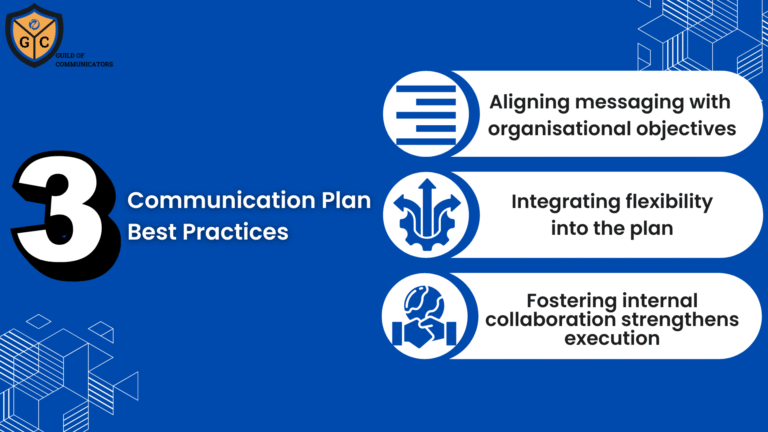Building and strengthening stakeholder relationships is an essential task for communicators.
These relationships provide the foundation for trust, collaboration, and long-term success.
However, how can communicators assess whether their relationship-building efforts are effective?
Are their relationships ideal, requiring improvement, or at risk of failure?
Let’s explore the challenges of evaluating stakeholder relationships and consider actionable steps to measure and enhance them effectively.
Why Measuring Stakeholder Relationships Is Difficult
Assessing the quality of stakeholder relationships is not always straightforward. Unlike quantitative data points, relationships involve subjective elements such as trust, mutual respect, and shared goals.
One major challenge is identifying clear indicators of success. For example, is the absence of conflict a sign of a good relationship, or could it reflect a lack of engagement? Without clear criteria, communicators may rely on assumptions rather than data.
Another obstacle is bias. Personal impressions or past interactions can cloud judgement, leading to inconsistent evaluations. Furthermore, stakeholders themselves may not openly communicate dissatisfaction, leaving gaps in understanding the relationship’s true state.
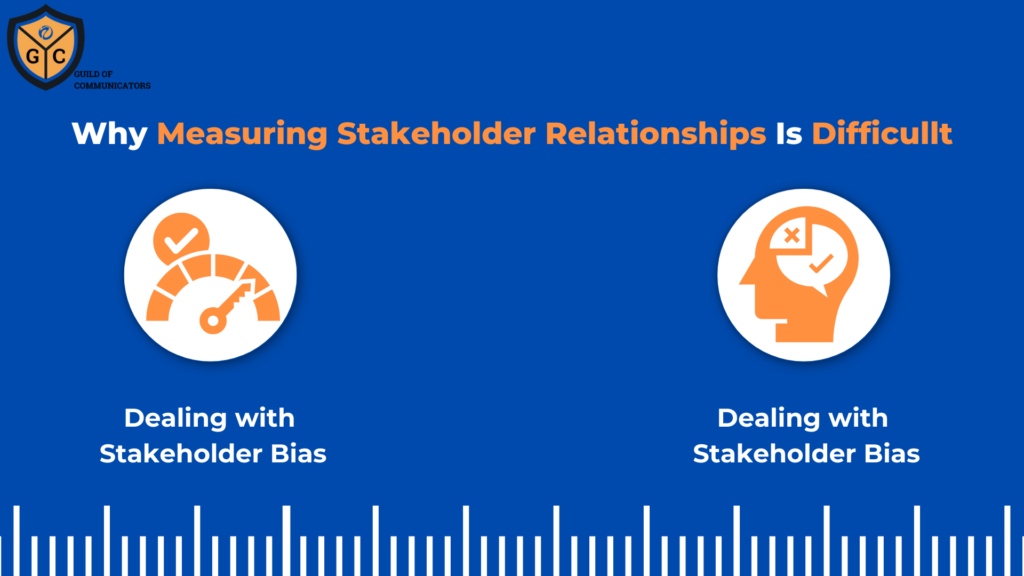
The Building Blocks of Relationship Evaluation
In an ideal scenario, measuring stakeholder relationships involves both qualitative and quantitative metrics. This dual approach ensures a comprehensive view of relationship health.
Qualitative measures include stakeholder feedback, sentiment analysis, and insights from direct conversations. These provide context and depth, helping communicators understand stakeholder perspectives.
Quantitative metrics can include response times to inquiries, frequency of engagement, or stakeholder satisfaction scores derived from surveys.
When combined, these metrics offer a balanced assessment of trust, alignment, and overall relationship strength.
Crafting a Stakeholder Relationship Formula
Developing a method to measure stakeholder relationships requires a balance between qualitative insights and quantitative metrics. By combining these elements into a simple formula, communicators can gain a clearer understanding of relationship health and progress. This formula should be adaptable, practical, and focused on capturing the most critical aspects of trust, engagement, and outcomes.
An effective formula integrates three key components: trust, engagement, and outcomes.
Trust: Evaluate through stakeholder surveys or feedback forms. Use ratings such as “strongly agree” to “strongly disagree” for statements like “I trust the communicator’s guidance.”
Engagement: Measure through participation rates in meetings, responses to communication, or frequency of collaboration.
Outcomes: Assess alignment with shared goals by tracking project milestones, deliverables, or mutual achievements.
By assigning scores to each component and averaging the results, communicators can create a straightforward relationship score. This score serves as a benchmark to identify strengths and areas for improvement.
Using this formula provides communicators with a reliable starting point for assessing stakeholder relationships. While no measurement system is perfect, integrating both qualitative and quantitative data ensures a more holistic view. Over time, this approach can become a powerful tool for tracking progress, identifying areas for improvement, and demonstrating the value of relationship-building efforts.
How Measuring Relationships Drives Improvement
Measurement is not just about understanding; it’s about action.
While it can feel somewhat transactional to be measuring a relationship, we can choose to be upfront and transparent about the process, our formulas and the reasons we are doing so.
When communicators adopt the mindset that “what gets measured gets done,” they take proactive steps to strengthen relationships.
Regular evaluations keep stakeholder relationships on the radar. By tracking progress, communicators can address issues before they escalate and identify opportunities to deepen connections.
Moreover, this mindset encourages transparency. Sharing measurement results with stakeholders fosters trust and opens the door to collaborative problem-solving, creating a cycle of continuous improvement.
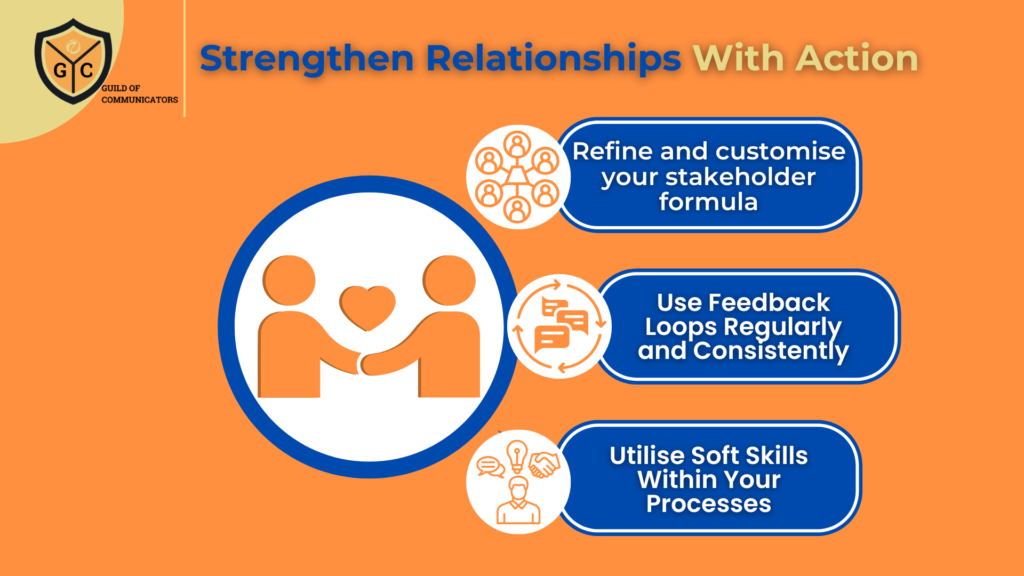
Strengthening Relationships Through Action
Measuring stakeholder relationships is an ongoing process that benefits from continuous refinement and active engagement. By focusing on both soft skills and structured processes, communicators can enhance their ability to evaluate and strengthen these relationships.
Here are three actionable steps to help you improve your approach and ensure lasting results.
- Refine the Formula: Adjust metrics based on stakeholder feedback. If stakeholders value responsiveness over frequency of contact, prioritise that in your measurements.
- Build Feedback Loops: Regularly collect stakeholder input through surveys, one-on-one meetings, or informal check-ins. This not only improves accuracy but also demonstrates your commitment to the relationship.
- Combine Soft Skills with Processes: Enhance your communication skills, such as active listening and empathy, while also setting up systematic reviews of relationship metrics to ensure consistency.
Improving how you measure stakeholder relationships is a commitment to both accuracy and growth. By refining your formula, fostering feedback loops, and combining personal connection with process improvements, you create a sustainable system for success.
Over time, these actions will not only strengthen individual relationships but also enhance the overall effectiveness of your communication strategies.
*****
Join the Guild of Communicators at www.gocommunicators.com.
The Guild of Communicators (Go Communicators) stands as the preferred community for communicators seeking to elevate their craft. Through our Academy of Excellence, we provide best-in-class frameworks, fit-for-purpose resources, and opportunities that support members in achieving professional excellence.
We provide the following resources, tools and opportunities to members:
- Best-in-Class Resources: We provide our members with access to frameworks, playbooks and tools that empower them to achieve and maintain professional excellence.
- Continuous Learning and Growth: Through our comprehensive training programmes, workshops, delivered digitally, 24/7 and in-person, we support the ongoing professional development of communicators.
- A Supportive Network: GOC fosters a vibrant community where communicators can connect, collaborate, and support each other, creating a network that champions mutual growth and success.
- Shared Knowledge and Expertise: Our members benefit from the collective wisdom and experience of a diverse group of communication professionals, enhancing their skills and perspectives.
Go Communicators is dedicated to amplifying the impact and value that communicators bring to their organisations, highlighting their crucial role in driving success and growth.
We equip our members with the strategies and tools needed to become influential leaders and business partners within their organisations, enhancing their ability to drive positive change and outcomes.
Through our support and resources, communicators can demonstrate clear, measurable outcomes that showcase their value and impact, reinforcing their importance to their organisations.
Join the Guild of Communicators at www.gocommunicators.com
Subscribe to join over 1500+ communicators and brands getting value every Tuesday while reading A Communicator’s Perspective, our weekly newsletter.

